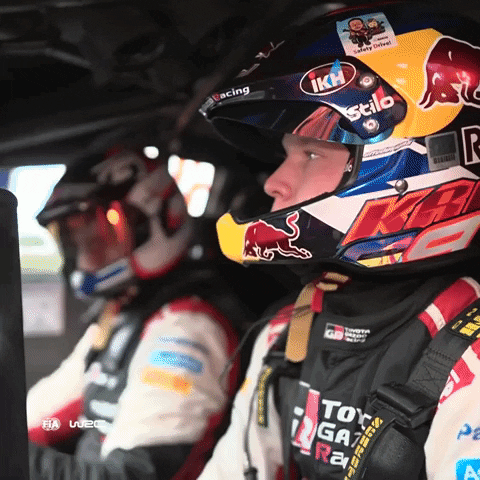You were not born to be "Administrative"
You were born to be more than that!
For years, I didn’t know how to drive.
I depended on public transport. It worked - I got from Point A to Point B most days.
But I had to follow the schedule. There was no flexibility. Routes were fixed.
I dealt with delays and sudden cancellations. There were limitations.
I tried driving multiple times back in India. Each time, I stalled, panicked, and quietly decided: maybe driving just isn’t for me.
So I stayed dependent.
And that came at a cost - you give up some freedom.
Years later, I tried again. Different country. Same fear.
But this time, I didn’t quit.
It also felt easier and safer because the roads were smoother and the car was smarter, filled with automations that supported me.
It gave me confidence instead of anxiety.
And when I finally drove alone - really drove - something changed.
Agency replaced dependency.
Now, I love driving so much that I sometimes dream of driving on the Abu Dhabi F1 Ferrari track.
And that’s when it hit me - HR has been living the same story.
🚌 HR’s Public Transport Problem
Old HR systems were designed to record data, not draw insights.
They made sure policies were followed and learning courses were completed.
We spent years running transactions - payrolls, appraisals, benefits, attendance -
important work, but invisible work.
Necessary, but there is nothing transformational about it.
The truth is, the systems we inherited shaped the stories we told about ourselves.
When your daily work revolves around checklists, compliance, and forms,
you start to believe that’s all HR is meant to be.
That’s how we built the muscle for accuracy -
but lost the confidence for experimentation.
And somewhere along the way, administration became our comfort zone.
For years, HR has relied on IT, external vendors, and enterprise HRIS systems - SAP, Oracle, Workday that serve millions but move slowly.
They’re powerful but rigid.
You can request a feature and wait for years to get it, or forget about it.
Every automation, every dashboard, every new workflow had to go through someone else’s queue.
So we learned to adjust - and do things manually.
And let’s be honest - most of us in HR aren’t technology nerds.
We didn’t grow up writing code or programming.
And over time, we told ourselves the same story I once did behind the wheel:
Maybe technology just isn’t for us.
That’s how HR became the department of administration, not acceleration.
We’ve been great passengers - compliant, careful, consistent, but we could never take charge of where we take our technology.
🚗 The Shift: When HR Learns to Drive
That story is changing.
Today’s AI tools are low-code and no-code platforms that have redrawn the map.
You don’t need to know coding to automate an HR process.
All you need is curiosity and a continuous improvement mindset - one that does not accept the status quo.
AI has the potential to turn HR from a consumer of technology to a creator of solutions.
When HR learns to drive, three shifts happen:
From waiting to building.
No more IT tickets for every change. HR teams can now automate, design, and iterate on their own.From systems to experience.
HR stops serving platforms and starts designing journeys that are personal, intuitive, and human.From administration to strategy.
AI doesn’t replace HR; it releases HR to focus on culture, foresight, and business alignment.
⚙️ Case Studies: HR behind the Wheel
What I am quoting above isn’t just theory, there are real world examples of HR teams in companies actually doing it!
🔹 KFC Canada (Yum! Brands)
KFC’s HR team is proving that AI can amplify people.
Using Microsoft Copilot, they draft job descriptions, internal communications, and engagement calendars in minutes - freeing time for strategic work.
They even launched an internal AI Academy to train employees on how to use generative AI responsibly.
The result: HR now spends less time filling forms and more time shaping culture.
🔹 Zapier’s HR Playbook
At Zapier, HR led the company’s internal AI adoption.
They built 30 AI workflows and achieved 97 % adoption across the organization - not through mandates, but by modeling curiosity.
Their HR team became the engine of transformation, guiding others on how to integrate AI into daily work.
⚠️It all sounds good but…
I know what you are thinking and I get it.
We can talk about AI, low-code, no-code and HR’s new identity all day…
but there’s something deeper holding us back.
It’s not the tools - it’s our “reputation” that has deterred our confidence!
Our trainings haven’t landed well in the past.
Our people don’t always listen to us!!
For years, HR has been seen as the function that “doesn’t get technology.”
We also have an image - one we partly built ourselves -
HR is a department that polices policies, sends reminders, and enforces rules that don’t always make sense to the people.
Somewhere along the way, we convinced ourselves that leading AI transformation isn’t our cup of tea - that it belongs to IT or Data teams.
And if all else fails, we’ll just hire an external vendor to do it for us.
This is our moment to rebuild trust -
not by trying to be more like IT,
but by being more like us: curious, creative, and deeply human.
It’s time to leverage AI to learn about AI and stay informed.
Strategic recommendations
Here’s how companies like Gartner recommend getting started:
Build an HR-first AI strategy. One that aligns with business goals and has clear ownership. AI in HR can’t live in someone else’s roadmap - it needs to be ours.
Partner with IT, Legal, and Compliance early. That’s how we keep AI reliable, accurate, and transparent, not just impressive in a demo.
Prioritize what matters most. Focus on HR use cases that actually move the needle - the ones that save time and shift mindsets.
Invest in skills, not fear. Help employees understand how AI will shape their work - starting with our own roles and what new skills will keep us in the driver’s seat.
Redesign HR roles for what’s next. If AI can handle the transactions, let’s use that time to rethink culture, strategy, and the employee experience itself.
I have led AI transformation for my HR team, and it was more than just obtaining Microsoft Copilot licenses for my team and conducting prompting sessions.
My HR team led the company’s first AI chatbot, proving HR can do it!
Suddenly, employees were asking questions we had never heard before. They were exploring, engaging, and pushing boundaries.
And now they want more chatbots because they don’t want to spend hours searching for information.
That’s when we realized: once you build and release something real, you don’t just uncover efficiencies - you uncover more possibilities!
We shifted the conversation.
If your HR team is ready to take the wheel - let’s talk.
About the Author
I’m Priya Tahiliani, and I’ve spent the last 15 years at the intersection of HR and Technology. Most of my career has focused on SAP HCM and SAP SuccessFactors consulting, working with Big Four firms and clients across the globe.
I built and launched my company’s first AI tool by forging a great partnership with IT, and today I continue to work with HR leaders to help shape the future of work with AI.
Beyond work, I serve as Vice President of Public Relations at Toastmasters. I’m also the Founder of the AI Collective – Oakville Chapter in Canada, part of the world’s largest community for AI professionals - a network dedicated to learning and leading responsibly with AI.
And of course, I write the AI Lady newsletter, where I share my experiences, insights, and thoughts about how AI is reshaping our workplaces.







Great analogy of how you stepped out of your comfort zone, faced your fears, and found a new way to get from point A to B- and you fell in love with your new “method” and never looked back! Change and transformation starts with each person- open your change and learning different ways to accomplish goals!